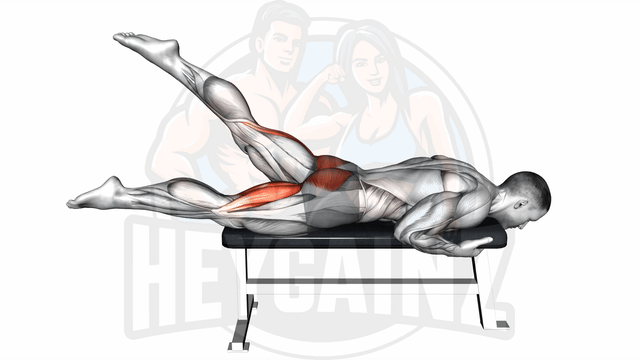
Instructions:
- 1Start by lying flat on your back with your arms at your sides and your palms down.
- 2Extend your legs in front of you, with a slight bend in your knees.
- 3Raise your left leg about 6 inches off the ground, keeping your right leg stationary.
- 4Lower your left leg while moving your right leg up.
- 5Alternate in a fluttering, kicking motion without touching the ground.
Tips:
- Keep your core engaged throughout the whole exercise.
- Focus on keeping your movements smooth, rather than fast.
- Keep your lower back flat on the ground to avoid strain.
- Regulate your breath, exhaling and inhaling with each leg kick.
Flutter Kicks: A Comprehensive Guide
Flutter kicks are a dynamic bodyweight exercise that primarily targets the gluteus maximus while engaging the hips and core. This exercise is commonly performed by individuals seeking to enhance their core strength and improve their overall fitness levels. Flutter kicks can be easily integrated into various workout routines, making them a popular choice for those looking to optimize their workouts.
Muscles Worked
When performing flutter kicks, several key muscle groups are activated. The primary muscles worked include:
- Gluteus Maximus: Essential for hip extension and stability.
- Hip Flexors: Help in lifting the legs and maintaining rhythm.
- Abdominals: Engage to stabilize the torso and support the lower back.
Benefits of Flutter Kicks
Incorporating flutter kicks into your workout routine offers a variety of benefits:
- Improves Core Stability: Enhancing strength in the abdominal region can lead to better overall stability during physical activities.
- Enhances Hip Strength: Strengthening the hip muscles can improve performance in various sports and reduce the risk of injury.
- Boosts Endurance: Performing flutter kicks engages the cardiovascular system, making it a great exercise for building endurance.
How to Perform Flutter Kicks with Proper Form
For optimal results and safety, proper form is crucial:
- Lie flat on your back with your arms extended alongside your body or under your glutes for support.
- Lift your legs slightly off the ground, keeping them straight but not locked at the knees.
- Alternately kick your legs up and down in a fluttering motion. Keep your core engaged to prevent your lower back from arching.
- Maintain a steady rhythm and breathe evenly throughout the exercise.
Flutter Kicks vs. Scissor Kicks
While both flutter kicks and scissor kicks involve similar movements, the key difference lies in their execution. Flutter kicks involve alternating leg movements in a quick, up-and-down motion, while scissor kicks involve moving the legs in a crossing pattern. Choosing between the two depends on individual fitness goals and preferences.
Conclusion
Flutter kicks are an effective and versatile exercise that can significantly enhance your workout routine. Whether you're aiming to strengthen your core, improve your hip stability, or boost your endurance, incorporating flutter kicks into your program can yield impressive results. Remember to focus on maintaining proper form to maximize benefits and minimize the risk of injury.